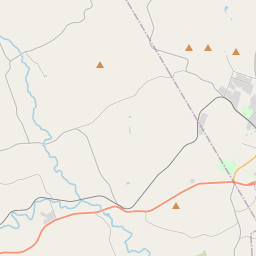First Baptist Church of Copperas Cove
Historical marker location:






Organized in 1885 by the Reverend J. F. Baker and thirteen charter members, this congregation first met in a community schoolhouse. The Gulf, Colorado, and Santa Fe Railway Company provided a plot of land for one dollar on which the members built their first sanctuary in 1890. The second sanctuary, built in 1908 to serve the growing congregation, is still in existence and used for Sunday School classes. The churches has produced several missionaries, ministers, and full-time Christian service professionals as it continues to provide important ministries to the community
As one of the most visible programs of the Texas Historical Commission (THC), historical markers commemorate diverse topics in Texas history, including: the history and architecture of houses, commercial and public buildings, religious congregations, and military sites; events that changed the course of local and state history; and individuals who have made lasting contributions to the state, community organizations, and businesses.
In the late 19th century, Texas became known for its cattle drives, in which cowboys would move herds of cattle from Texas to railheads in Kansas and other northern states. The cattle drives were dangerous and difficult work, but they played a key role in the development of the American cattle industry.
During the Texas Revolution and the subsequent establishment of the Republic of Texas, Coryell County saw significant growth. The area attracted pioneers and settlers who were drawn by the fertile land along the rivers. In 1854, the county was officially organized and named after James Coryell, an early frontiersman who was known for exploring and surveying the area.
Throughout the late 19th and early 20th centuries, Coryell County experienced periods of prosperity and challenges. Agriculture, particularly cotton production, played a significant role in the local economy. The arrival of the railroad in the late 19th century enhanced the county's connectivity and spurred growth in trade and commerce.
The county also contributed to the military history of Texas. During World War II, Camp Hood (now Fort Hood) was established in the southern part of Coryell County. The military installation has had a profound impact on the local economy, serving as an economic engine and a significant employer for the region.
Today, Coryell County continues to thrive as a vibrant community. It is home to a diverse population and offers a mix of urban and rural landscapes. The county's rich history can be seen in its historic buildings, museums, and landmarks, all of which provide a glimpse into the past and contribute to the county's unique cultural identity.
Coryell County Timeline
This timeline provides a condensed summary of the historical journey of Coryell County, Texas.
- 1854 - Coryell County is established by the Texas legislature.
- 1859 - The county seat, Gatesville, is established.
- 1861-1865 - The American Civil War impacts Coryell County, leading to economic hardships.
- 1872 - The Texas Central Railroad is completed, boosting the county's economy.
- 1882 - The first county courthouse is constructed.
- 1905 - The original county courthouse is replaced with a new building.
- 1929 - The Coryell County Museum opens, showcasing the area's history.
- 1942-1946 - The county experiences growth during World War II due to the establishment of Camp Hood (now Fort Hood).
- 1963 - The current county courthouse is built, replacing the 1905 building.
- 1997 - The Coryell County Courthouse is added to the National Register of Historic Places.